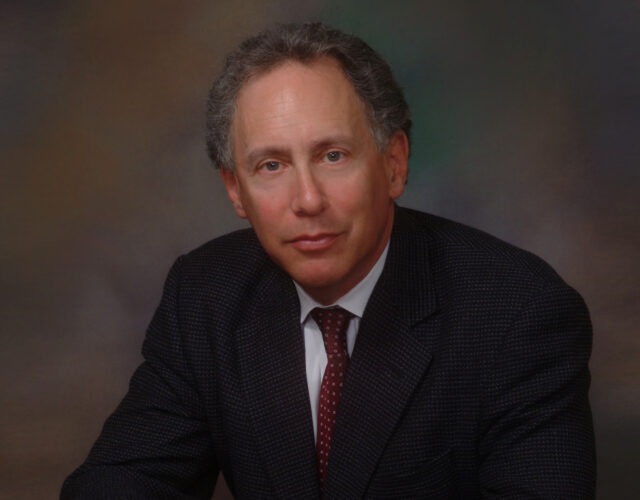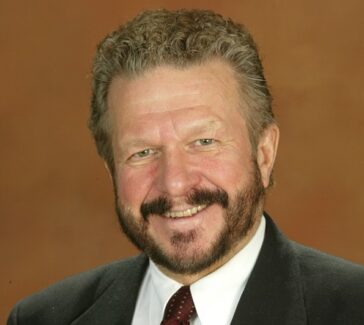Robert S. Langer
A biochemical and biomedical engineer, Langer works at the cutting edge of research into biologically compatible synthetic materials.

One of the most active research frontiers in polymer science is that of biologically compatible synthetic materials. At the forefront of scientific breakthroughs in this field is Robert S. Langer.
By one estimate research by Langer and his colleagues has affected two billion people. This is no wonder since his career has always been guided by his belief that science can make the world a better place.
The son of a liquor-store owner in Albany, New York, Langer (b. 1948) earned his bachelor’s degree from Cornell University in chemical engineering and went on to receive a doctorate in that field from the Massachusetts Institute of Technology (MIT). Writing his dissertation on a biochemical topic, “The Enzymatic Regeneration of ATP,” he entered the then-new fields of biochemical and biomedical engineering.
Graduating in the middle of the oil crisis of the mid-1970s, Langer might easily have taken a job with one of the big oil companies, but he held out for a position in a medical setting. His letters of application were turned down by several puzzled medical researchers, not knowing what to do with an engineer in their midst, but Judah Folkman, a pioneering cancer researcher at Boston’s Children’s Hospital and Harvard Medical School, offered him a postdoctoral position.
Cancer and Controlled-Release Drug Delivery
Folkman was researching how to inhibit the growth of blood vessels that supply blood to cancerous tumors and thus limit tumor growth and metastasis. Langer helped Folkman isolate the first angiogenesis inhibitor, which turned out to be a macromolecule—a very large molecule (for more on macromolecules, see Hermann Staudinger). Delivering such molecules to the body is exceedingly difficult since they are broken down by digestion and are blocked by tissues in the body if they are injected or inhaled.
Langer thought the answer lay in encapsulating the angiogenesis inhibitor in a noninflammatory synthetic polymer wafer that could be implanted in the tumor and would control the release of the angiogenesis inhibitor. Since known synthetic polymers blocked the passage of the inhibitor, he had to invent a very complex porous polymer that enabled the controlled release of this very large molecule.
At first his ideas met with much skepticism and ridicule; his grant applications were regularly turned down, and he even worried that his appointment in 1977 to MIT as an assistant professor would not be renewed.
Langer succeeded in making the necessary polymer and, with the assistance of an ever-growing laboratory of researchers at MIT, went on to invent many more polymers with specific biomedical uses. Among them was a drug-delivery system for the treatment of brain cancer (developed with Henry Brem of the Johns Hopkins University Medical School) that delivers chemotherapy directly to a tumor site and has far fewer side effects than conventional chemotherapy.
Over the years the wafers or chips that his teams have designed have become increasingly more sophisticated. Some can carry several drugs at a time and respond to stimuli external to the body, such as ultrasound signals, or chemical stimuli within the body—even using the latter to home in on a tumor.
Tissue Engineering
Langer is also renowned for his groundbreaking contributions to the fields of tissue engineering and regenerative medicine. He and his colleagues invented 3-D synthetic-polymer scaffolding on which new skin, muscle, bone, blood vessels, or entire organs can grow, enabling victims of serious accidents or birth defects to generate missing tissue. Artificial skin for burn victims is already a reality, and research continues on platforms for growing more complex tissues, such as heart or liver tissue, with the goal of one day being able to make fully implantable organs from scratch.
Recognition
In his MIT laboratory Langer fosters an entrepreneurial attitude among his postdoctoral students by urging patenting of inventions, forging links with industry, and forming start-up companies. For the excellence of his research and his dedication to making results available for the medical care of the public, he has received many honors, including election to all three American academies—the Institute of Medicine, the National Academy of Sciences, and the National Academy of Engineering.
In 2008 he received the Millennium Technology Prize, the largest prize for technological innovation and comparable to the Nobel Prizes in the sciences. He is one of seven individuals to hold both the U.S. National Medal of Science and the National Medal of Technology and Innovation, and in 2015 he was awarded the Queen Elizabeth Prize for Engineering.
Langer is one of the most widely cited biotechnology researchers and holds over 1,000 patents worldwide.
Langer delivered the 2001 Ullyot Public Affairs Lecture at the Chemical Heritage Foundation (CHF), now the Science History Institute, and received the organization’s top honor, the Othmer Gold Medal, the following year for his multiple roles as mentor, entrepreneur, and pioneer of modern biomaterials, to the benefit of humanity. He received the SCI Perkin Medal in 2012, and the Biotechnology Innovation Organization and CHF jointly awarded him the Biotechnology Heritage Award in 2014 for his innovative work fighting cancer, diabetes, heart disease, and schizophrenia.



